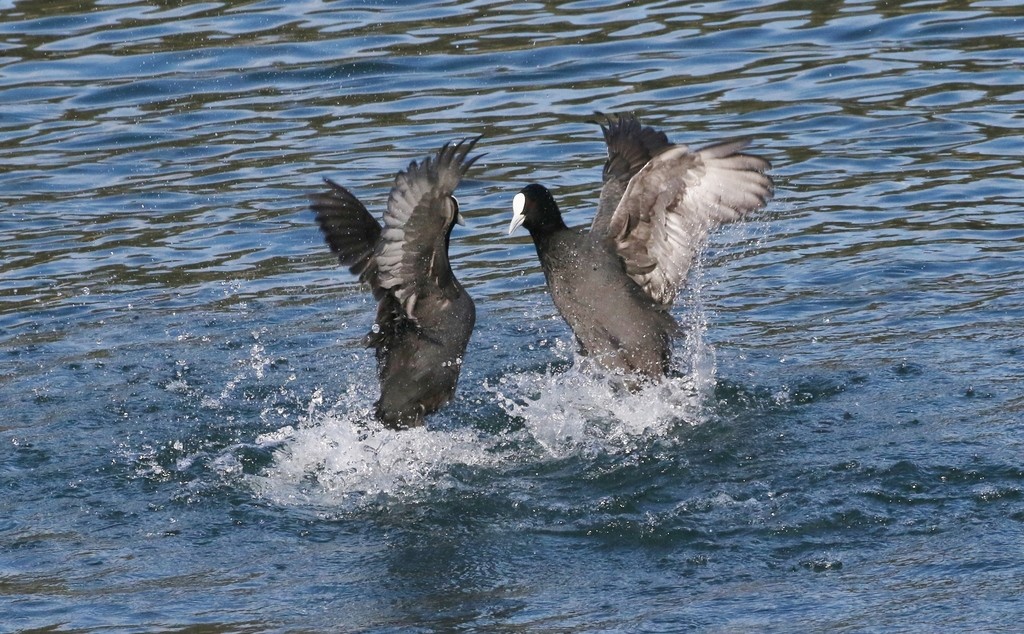Australasian Coot
A species of Coots Scientific name : Fulica atra australis Genus : Coots
Australasian Coot, A species of Coots
Botanical name: Fulica atra australis
Genus: Coots
Content
Description People often ask General Info
 Photo By silversea_starsong , used under CC-BY-NC-4.0 /Cropped and compressed from original
Photo By silversea_starsong , used under CC-BY-NC-4.0 /Cropped and compressed from original Description
It largely black except for the white bill and frontal shield (which gives rise to the phrase "as bald as a coot", in use as early as 1430). As a swimming species, the coot has partial webbing on its long strong toes. The sexes are similar in appearance. The juvenile is paler than the adult, has a whitish breast, and lacks the facial shield; the adult black plumage develops when about 3–4 months old, but the white shield is only fully developed at about one year old. 
Size
36 - 38 cm
Feeding Habits
The coot is an omnivore, and will take a variety of small live prey including the eggs of other water birds, as well as algae, vegetation, seeds and fruit. It shows considerable variation in its feeding techniques, grazing on land or in the water. In the water it may upend in the fashion of a mallard or dive in search of food. 
Habitat
The coot breeds across much of the Old World on freshwater lakes and ponds. 
People often ask
General Info
Behavior
The Eurasian coot is much less secretive than most of the rail family, and can be seen swimming on open water or walking across waterside grasslands. It is an aggressive species, and strongly territorial during the breeding season, and both parents are involved in territorial defence. During the non-breeding season they may form large flocks, possibly related to predator avoidance. It is reluctant to fly and when taking off runs across the water surface with much splashing. 
Distribution Area
It occurs and breeds in Europe, Asia, Australia, and Africa. The species has recently expanded its range into New Zealand. It is resident in the milder parts of its range, but migrates further south and west from much of Asia in winter as the waters freeze. 